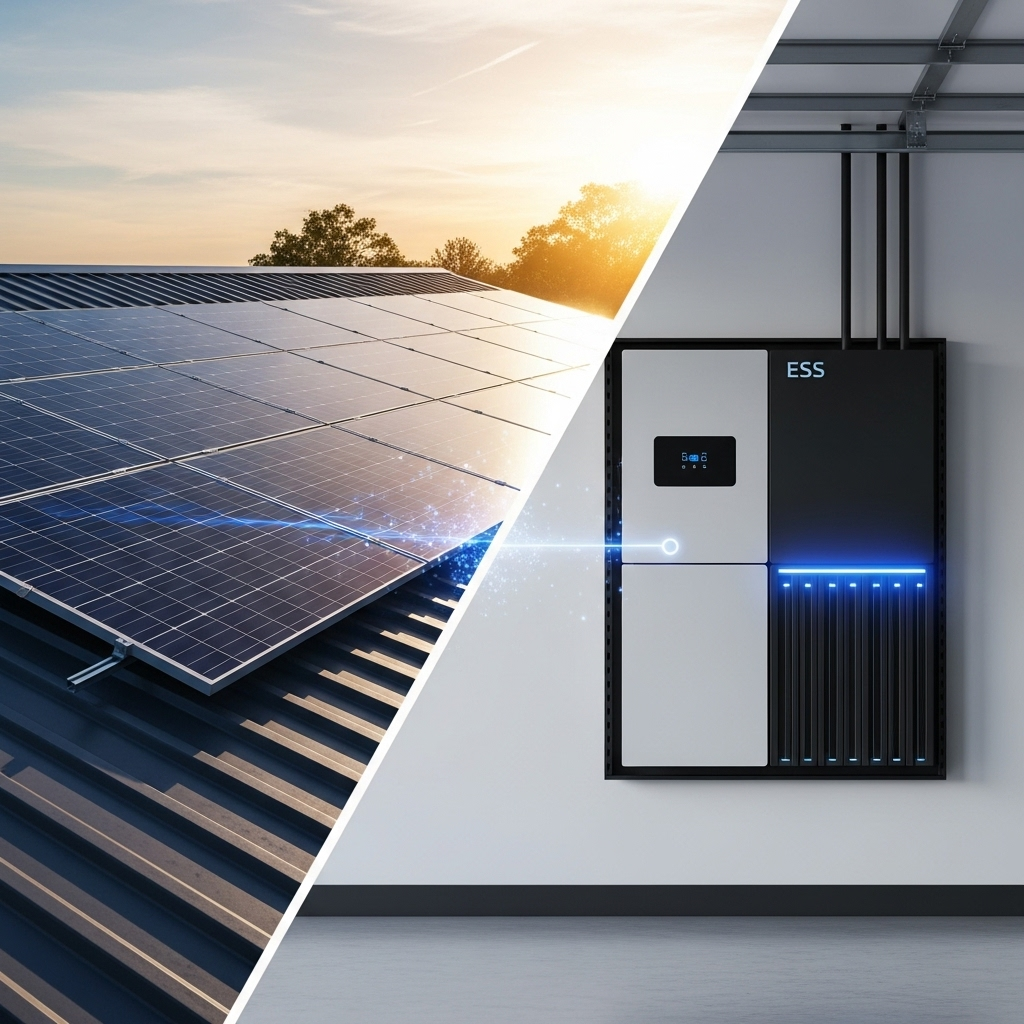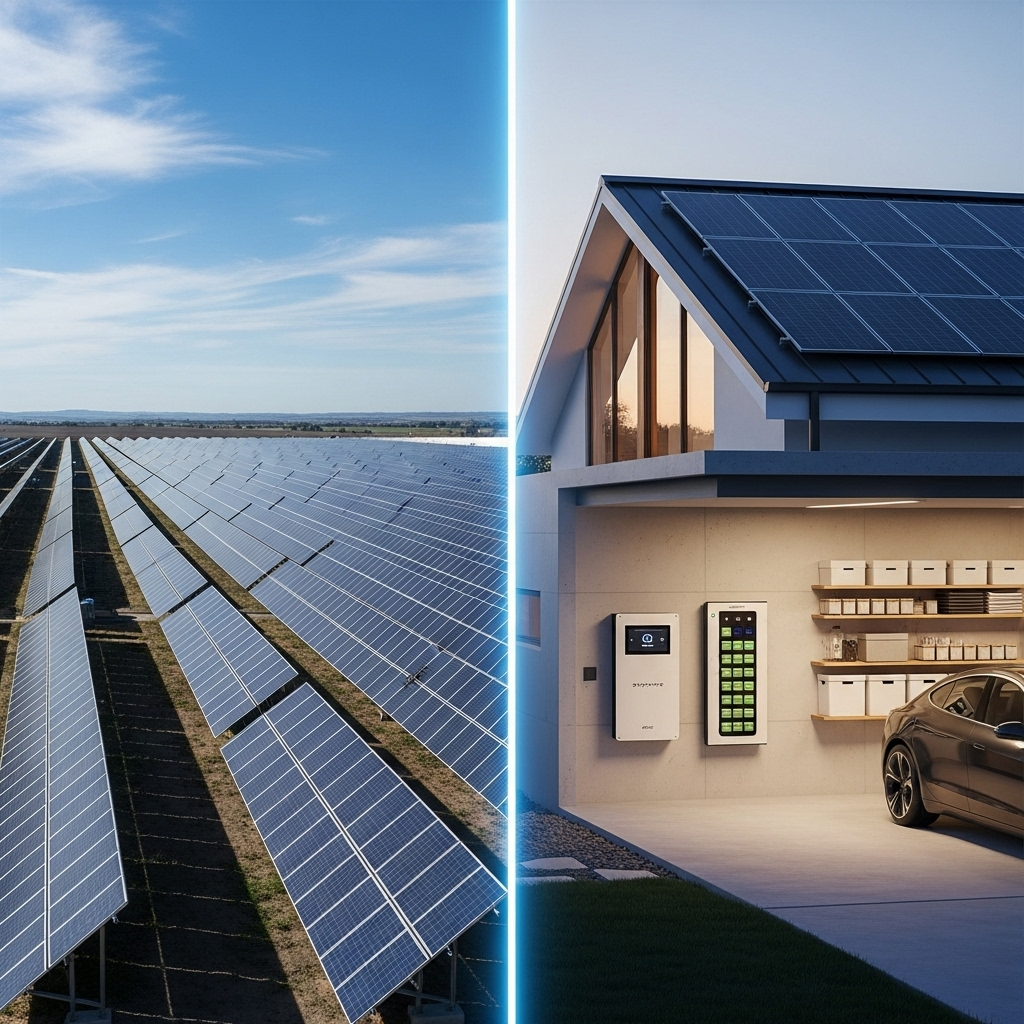Many regions and utilities are racing against the clock to meet ambitious Renewable Portfolio Standards (RPS) by 2030. These mandates require a certain percentage of electricity to come from renewable sources. While solar and wind are powerful generators, their intermittent nature presents a significant hurdle. This analysis shows how microgrids powered by Lithium Iron Phosphate (LiFePO4) batteries offer a practical and effective strategy to not only meet but exceed these critical renewable energy mandates.
The Challenge of Meeting 2030 Renewable Energy Mandates
Governments worldwide are setting firm targets for renewable energy adoption. The goal is to reduce carbon emissions and build a more sustainable energy infrastructure. However, reaching these targets is proving more complex than simply installing more solar panels or wind turbines.
Understanding the 2030 RPS Landscape
Renewable Portfolio Standards vary by state and country, but the trend is clear: the required percentage of renewable energy is increasing. For example, many US states are targeting 50% or more renewables in their energy mix by 2030. The European Union has similar goals. Yet, progress often lags behind ambition. According to a report from the International Energy Agency, Renewables 2024, many regions are projected to fall short of their 2030 targets due to issues like grid connection delays and the inability to fully utilize the power generated.
The Intermittency Problem with Renewables
The sun does not always shine, and the wind does not always blow. This variability, known as intermittency, is the primary challenge for a grid that relies heavily on renewables. During peak production times, like a sunny afternoon, solar farms can generate more electricity than the grid can handle. This oversupply can lead to grid instability or force operators to curtail (shut down) renewable generation, wasting clean energy and revenue. Conversely, when demand is high but renewable generation is low, the grid must rely on fossil fuel 'peaker' plants to fill the gap.
LiFePO4 Microgrids as the Strategic Solution
Instead of viewing intermittency as a roadblock, energy storage turns it into an asset. A microgrid equipped with a robust battery system can manage these fluctuations, creating a stable and reliable power supply from renewable sources.
What is a LiFePO4 Microgrid?
A microgrid is a self-contained, localized energy system that serves a specific area, such as a business campus, a neighborhood, or a remote facility. It can operate connected to the main utility grid or 'island' itself to function autonomously during a power outage. When this system uses Lithium Iron Phosphate (LiFePO4) batteries for storage, it gains significant advantages. LiFePO4 chemistry is known for its exceptional safety, long cycle life, and thermal stability, making it a superior choice for long-term, high-demand applications compared to other lithium-ion chemistries.
How Microgrids Directly Address RPS Challenges
A LiFePO4 microgrid solves the core problems holding back RPS progress. It acts as a buffer, absorbing excess renewable energy and deploying it precisely when needed. This capability directly supports grid stability, maximizes the value of renewable assets, and promotes a more resilient, decentralized energy model. This move towards decentralization is a key theme in global energy development, as noted in IRENA's study, Decentralised solar PV: A gender perspective, which highlights its role in improving energy access and reliability.
A Hypothetical Case Study: A Commercial Campus
To see the impact in action, consider a common scenario: a mid-sized industrial park in a state with a 50% RPS mandate for 2030. The park has ample rooftop space for solar panels but struggles with high electricity costs.
Scenario: The Path to Compliance
The industrial park's energy consumption peaks in the early morning and late afternoon, when factory shifts change and office activity is high. Their solar panels, however, generate the most power midday. This mismatch results in them selling cheap solar power back to the grid at noon and buying expensive power from the grid just a few hours later. This inefficient cycle makes it difficult to meet their renewable energy goals in a cost-effective way.
Implementing the LiFePO4 Microgrid Solution
The park installs an integrated system: a large solar PV array, a centralized LiFePO4 battery energy storage system (BESS), and an intelligent energy management system (EMS). The system operates in a simple, effective cycle:
- Midday: Solar panels power the park's operations. All excess energy is used to charge the LiFePO4 battery bank.
- Peak Demand (Morning/Afternoon): Instead of drawing from the grid, the park uses the clean energy stored in its batteries. This practice, known as 'peak shaving', drastically reduces electricity bills by avoiding high demand charges.
- Grid Outage: The microgrid's EMS automatically detects the outage and disconnects from the utility grid. It then uses the solar and battery system to power the park's critical loads, preventing costly downtime.
Analyzing the Performance and Results
The transformation is significant. By storing their own solar energy, the park shifts from being a passive consumer to an active energy manager. The table below illustrates the improvements.
| Metric | Before Microgrid Installation | After LiFePO4 Microgrid Installation |
|---|---|---|
| Grid Reliance During Peak Hours | 100% | Less than 20% |
| Solar Energy Utilization | ~60% (40% curtailed or sold cheap) | 99%+ |
| Progress Toward 50% RPS | 25% | 65% (Exceeds target) |
| Energy Cost Savings | Base Level | 30-50% Reduction in Annual Bill |
| Operational Resilience | None (Vulnerable to outages) | Full backup for critical loads |
Evaluating the right battery is key to achieving these results. Metrics like Depth of Discharge (DoD), which indicates how much of the battery's capacity you can use, and Round-Trip Efficiency, the measure of energy lost in a charge-discharge cycle, are vital. As detailed in the ultimate reference on solar storage performance, high-quality LiFePO4 batteries offer a DoD of 90% or more and excellent efficiency, ensuring you get the most out of every kilowatt-hour stored. This performance is crucial for the system's financial return.
Scaling the Solution: From Single Sites to Community Grids
The benefits of LiFePO4 microgrids extend far beyond a single property. When multiple microgrids are deployed across a region, they can work together to support the entire utility grid.
The Broader Impact on Grid Infrastructure
A network of microgrids can function as a Virtual Power Plant (VPP), providing stability services to the main grid. This reduces the need for expensive and time-consuming upgrades to transmission lines and substations. As the IEA's Solar Energy Perspectives report explains, supportive government policies and clear targets are fundamental in encouraging the widespread adoption of such distributed energy technologies, which ultimately strengthens the entire energy system.
Economic and Environmental Co-Benefits
Achieving RPS targets is just one piece of the puzzle. LiFePO4 microgrids also deliver powerful co-benefits. They reduce carbon footprints, create local jobs in the green economy, enhance energy security for communities, and provide long-term protection against volatile energy prices. They empower consumers to take control of their energy generation and use.
Your Next Steps Toward Energy Independence
LiFePO4 microgrids are more than a compliance tool; they are a strategic investment in a resilient and affordable energy future. They solve the fundamental challenge of renewable intermittency, turning solar and wind into dependable, around-the-clock power sources. By adopting this technology, businesses and communities can confidently meet and surpass 2030 renewable energy mandates while building a more secure and independent energy system.
Disclaimer: This article is for informational purposes only and does not constitute financial or investment advice. You should consult with a qualified professional before making any investment decisions.
Frequently Asked Questions
What is the typical lifespan of a LiFePO4 battery in a microgrid?
A high-quality LiFePO4 battery is designed for longevity. It can typically deliver several thousand charge-discharge cycles, which often translates to a lifespan of 10 to 20 years, depending on usage patterns and operating conditions. This makes them a reliable long-term investment.
Are microgrids only for large commercial properties?
No, microgrids are highly scalable. While they are ideal for commercial and industrial facilities, the same principles apply to residential homes, farms, remote cabins, and even entire communities. The system size is tailored to the specific energy needs of the user.
How does a microgrid save money?
A microgrid saves money in several ways. It reduces electricity bills through 'peak shaving' (avoiding high demand charges), maximizes self-consumption of free solar energy, and can provide a return by selling stored energy or grid services back to the utility. It also prevents financial losses from power outages.
What happens during a power outage?
During a grid outage, a microgrid's controller automatically disconnects from the utility in a process called 'islanding'. The system then uses its stored battery energy and ongoing solar generation to continue powering the connected loads, providing a seamless source of backup power.





Leave a comment
All comments are moderated before being published.
This site is protected by hCaptcha and the hCaptcha Privacy Policy and Terms of Service apply.